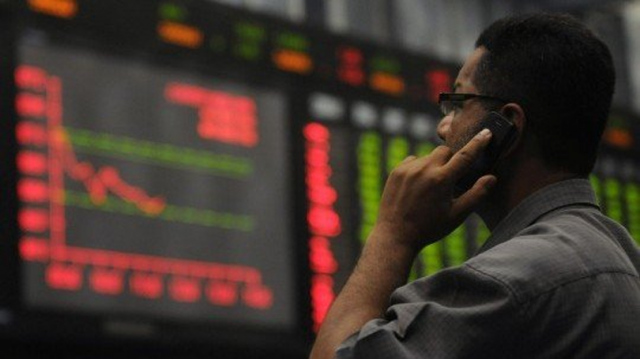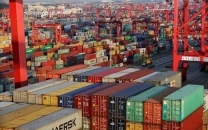Unlocking Pakistan’s trade potential with Europe
There must be a roadmap for reforms to remove bottlenecks

The European Union (EU), a conglomerate of 27 different countries, is the largest destination market for Pakistani exports. According to the trade statistics provided by the International Trade Centre’s Trademap.org, the EU imported more than $12 billion worth of goods from Pakistan in 2022. The EU provides Pakistani exporters with GSP (Generalised Scheme of Preferences) Plus concessions on the exports of goods as an incentive to pursue good governance and sustainable development. Although there are several conditions attached by the EU to become a recipient of this scheme, it provides Pakistani exporters, particularly of textile products, with duty-free access to the European market. The imports into the EU from Pakistan increased from $5.4 billion in 2013 to $12 billion in 2022, an increase of over 120% in 9 years. Comparatively, exports from India, the largest exporter in the South Asian region, and exports from the Philippines, the largest exporter to the EU among GSP Plus beneficiaries, have increased by less than 100% in the last 9 years. Pakistan would have lost at least $3 billion in exports to the EU if the status was revoked, signifying the importance of this unilateral liberalisation programme for the Pakistani economy. However, several challenges remain for Pakistani exporters that must be addressed to improve their export capabilities.
I recently authored a report on the export pattern of Pakistan to the EU, published by the Friedrich Naumann Foundation for Freedom in collaboration with the PRIME Institute. The report, titled ‘Pakistan and EU Trade Potential: The Bottlenecks and Roadmap for Reforms’, maps out the trade patterns between Pakistan and the EU, identifies some obstacles, and charts out the reform path. The report analyses the trading patterns between Pakistan and the EU and compares them with those of regional counterparts, Bangladesh, India, and Vietnam. Exports from Pakistan and Bangladesh to the EU are heavily dominated by textile products, while those from India are petroleum products, pharmaceuticals, and smartphones. Exports from Vietnam are dominated by electrical and electronic goods such as smartphones. Both India and Vietnam export a relatively more diversified range of products to the EU than Pakistan. The top 15 products from Pakistan and Bangladesh are similar. Even within the textile industry, Pakistan mainly exports cotton-based products. While the share of cotton-based products in the exports to the EU has increased from Pakistan in the last 9 years, it is decreasing elsewhere as exporters of textile products introduce a wider range of varieties involving man-made and artificial fibres. The report highlights the lack of diversification in the exports from Pakistan.
The report further delves into determining the relative competitiveness of products exported from Pakistan and its regional counterparts and the relative specialisation in the export basket. While Pakistan and Bangladesh report, on average, lower unit values in the exports of textile products relative to those reported by India and Vietnam, they tend to report higher levels of comparative advantage in textile products as determined through the revealed comparative advantage (RCA). The low unit values may also be related to the lack of quality in the products, while high RCAs are indicative of the lack of diversification in the export basket. Further, Pakistan reports lower unit values in the production of made-up textile products than both India and Vietnam. This raises questions regarding not only the quality of products but also the relative sensitivity to the costs of production across the regional trading partners. Exporters with higher unit values may not only export better quality products but are also likely to be less sensitive to cost changes.
One of the major findings in the report is the value of trade loss of at least $3 billion if the GSP Plus status is revoked. However, the report also emphasises the possibilities of gains in exports when Bangladesh will lose its Everything but Arms (EBA) status. This is critical given that Bangladesh is set to lose its EBA status in 2029 as it is upgraded from its LDC status in 2026. Certain products that are likely to gain from the revocation of the status enjoyed by Bangladeshi exporters are highlighted in the report. Unilateral trade concessions to the poorer countries are a common policy tool used by richer economies to aid development. It is critical that policymakers and academics gauge the costs and benefits of such measures, ensuring economy-wide benefits rather than targeting winners.
The report highlights some of the trade-related challenges that Pakistani exporters face when accessing the EU market. Pakistan has a low incidence of non-tariff measures (NTMs) on its imports, while other regional countries have adopted measures to ensure that not only imports but also domestically produced goods meet international standards. The regulatory convergence in NTMs is important as it can help reduce the costs of exporting, particularly when significant gaps may exist for producers when complying with vastly different measures imposed on domestic sales and foreign sales. Hence, the lack of convergence in NTMs can be an important obstacle for export growth, particularly when regional counterparts are ensuring that their own local production meets international standards.
The report also highlights the trade-related obstacles that Pakistani firms face when exporting and the lack of female worker participation reported across industries in Pakistan. While the former increases trade-related challenges, the latter can not only reduce productivity across firms as they are unable to tap into an important resource but can also have socioeconomic implications. Further, the trend of some exports to the EU of the products belonging to the more non-traditional export-based industries in Pakistan such as ethyl undenatured alcohol, medical instruments, inflatable balls, and footwear is shown.
The report concludes with a list of recommendations that could potentially increase exports to the EU as well as to other trading partners. The recommendations include product diversification, a focus on satisfying the needs of EU consumers by ensuring better quality of products, improving the regulatory environment in Pakistan so that the production of poor-quality goods that are harmful for consumption is restricted, improving trade facilitation so that capabilities and know-how of exporters increase, and encouraging female labour participation. In essence, it is important to ensure that policymakers increase the scope of such concessional trade preferences beyond a few beneficiaries and undertake structural transformation that not only improves the complexity of the economy but also propels the exports of Pakistan as its exporters capture a greater market share in their important export destination markets.
THE WRITER IS THE ASSISTANT PROFESSOR OF ECONOMICS AND RESEARCH FELLOW AT CBER, INSTITUTE OF BUSINESS ADMINISTRATION, KARACHI
Published in The Express Tribune, October 9th, 2023.
Like Business on Facebook, follow @TribuneBiz on Twitter to stay informed and join in the conversation.


















COMMENTS
Comments are moderated and generally will be posted if they are on-topic and not abusive.
For more information, please see our Comments FAQ